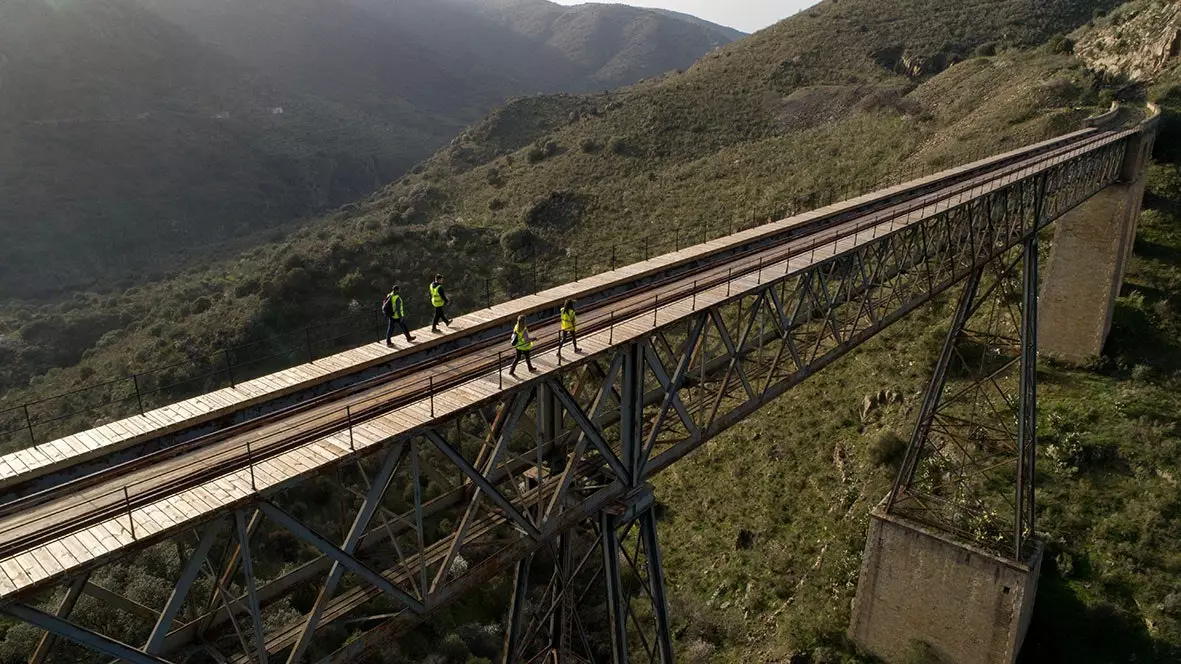
17 kilometers of railway now converted into a trail
Plummeting canyons, stone cliffs, zippers of water at your feet, panoramic views of a green that sometimes seems infinite, as if the Arribes del Duero they were never going to end and they always had an ace up their sleeve to surprise us. The one that concerns us today is called iron road and walks, between tunnels and bridges, the 17 kilometers of an old railway now converted into a path that can now be traveled. Enjoying nature was this.
And walk through an engineering prodigy too. Because this railway, which goes from La Fregeneda to the River Port of Vega de Terrón, it is. To build it, towards the end of the 19th century, it took four years of work the hands of 20,000 workers come from different parts of Spain and the rest of Europe, either with hammers, picks and even dynamite explosions to open tunnels in the rock, tons of iron to build the bridges that skilfully bridge imposing slopes…
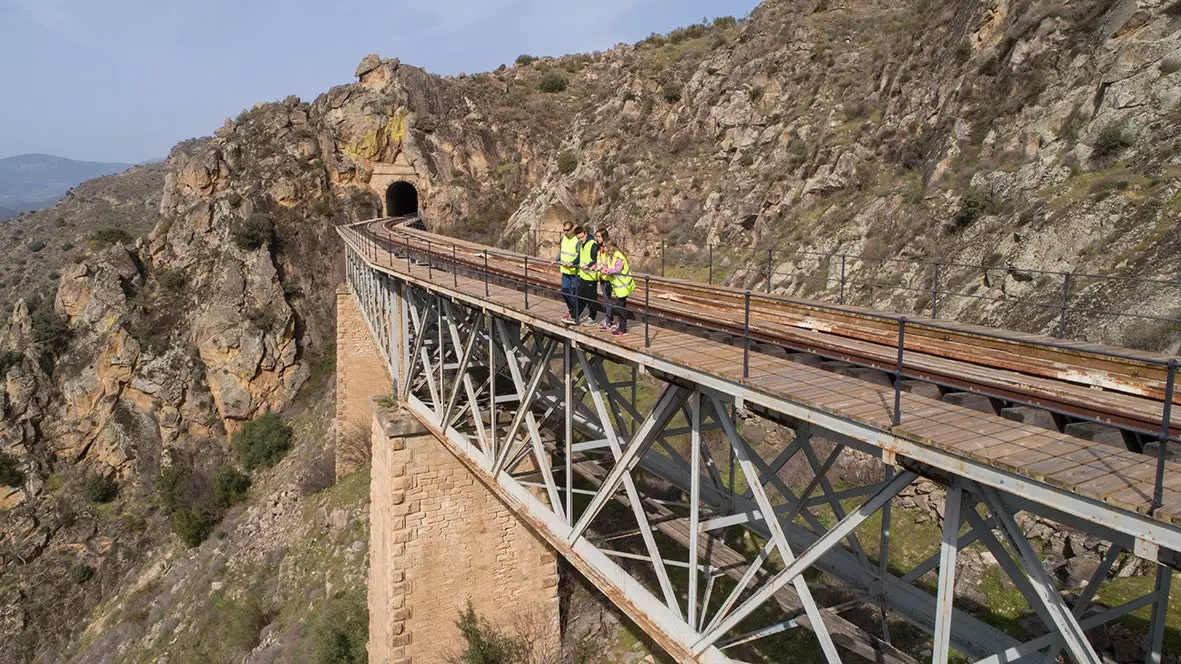
A path of tunnels and bridges through the Arribes del Duero
The result was the inauguration in 1887 of the 77 kilometers that make up the Spanish branch of what was called Douro Line: was born in The Fountain of Saint Stephen, where it joined the Valladolid-Salamanca-Fuentes de Oñoro line, and ran until connecting in the border town of Barca d'Alva with the Portuguese section that heads towards Porto.
It was born for what many things are born, to make money, creating a commercial connection between Salamanca and Porto more modern than the river transport by the Duero that was used until then. Hence, the efforts made by the Portuguese and Spanish governments and private investors. However, the railway line was not as profitable as expected, road communications improved and In 1985, almost 100 years old, it closed.
It lay fallow, torpor or whatever we want to call it, waiting for the moment to come back to life as a tourist route, something that gained momentum when it was declared Well of Cultural Interest in the year 2000 and that, in this 2021 in which it seems that we too are starting to come back to life, has crystallized in the Iron Road.
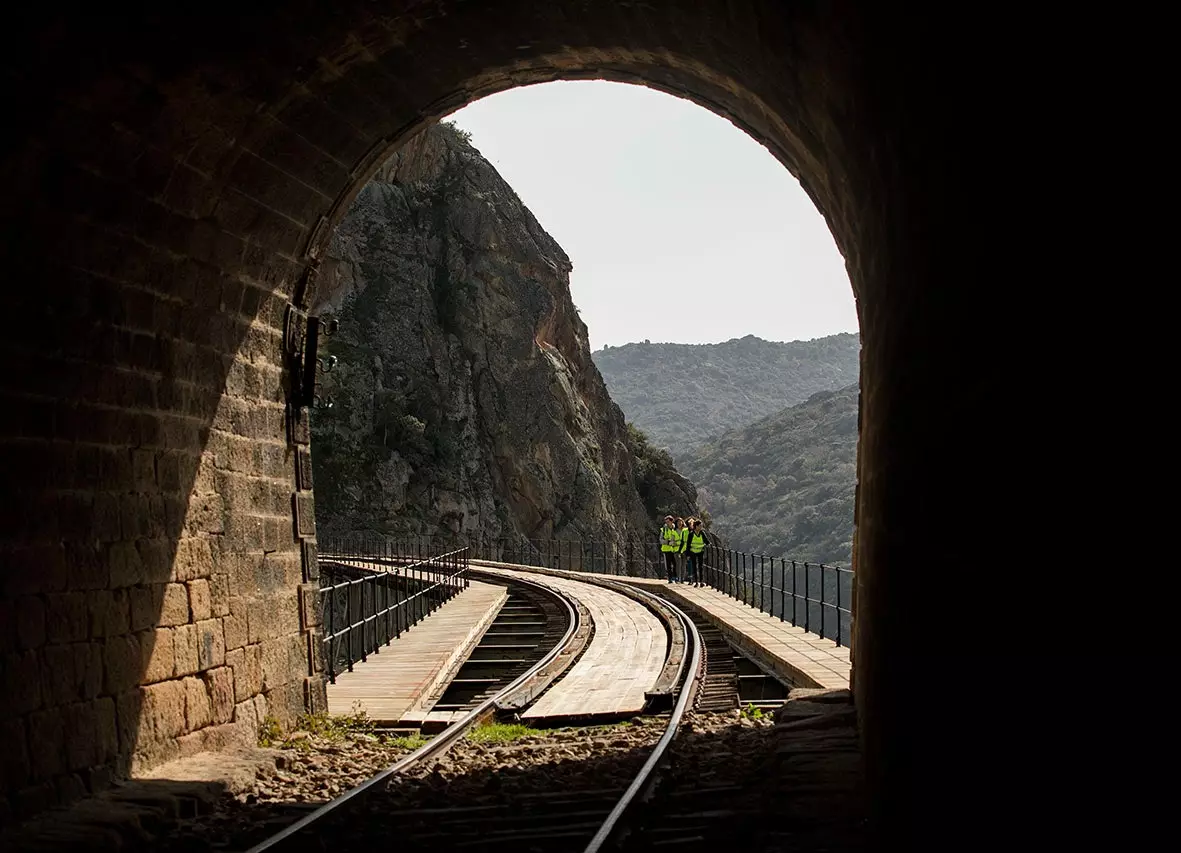
20 tunnels concentrated in 17 kilometers
With Camino de Hierro we are not referring to the 77 kilometers of the Spanish section of the Duero Line, but to the 17 finals, from La Fregeneda to the River Port of Vega de Terrón, that run through the canyons of the Águeda river before flowing into the Duero, in a landscape declared Natural Park and of capricious orography that forced to build 20 tunnels and 10 bridges with heights between 20 and 50 meters.
Now, the Diputación de Salamanca has turned it into a tourist path that is covered in about six hours. “After a short section heading south from La Fregeneda station, where the largest tunnel, 1.5 km long, is located, the track heads west through a new tunnel, this time in the shape of a ' u', joining the course of the Águeda river, which it accompanies on the right slope of its upstream until its mouth in the Duero”, explains the Diputación de Salamanca in a statement.
“The Camino de Hierro penetrates here into the broken arribeña orography, having to overcome cliffs, mountains and a great drop of almost 400 meters to descend to the scarce 120 meters of altitude that we find on the border with Portugal, in the river dock of Vega Terrón”, he concludes.
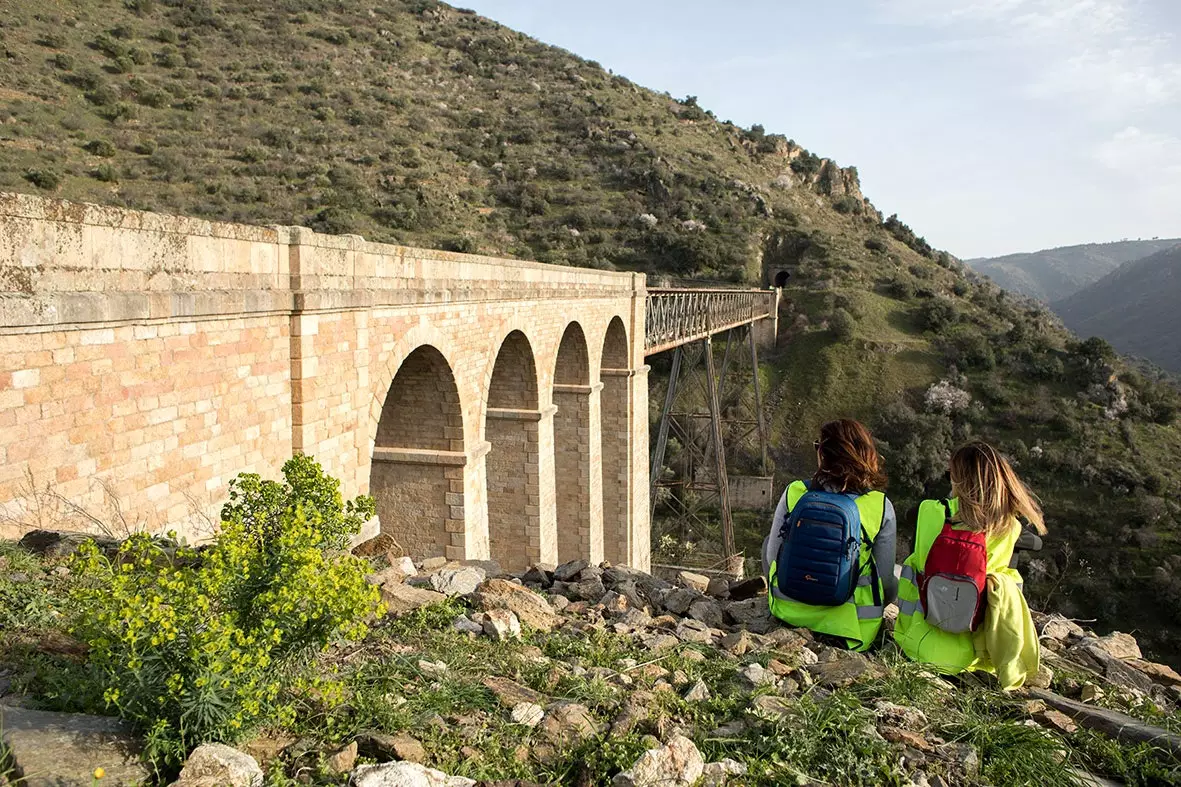
Enjoying nature was this
Hence the need for those tunnels that they add up to 4.3 km in length. As dark, as deep and as silent as they are, some even harbor unexpected protected bat colonies. And also how necessary they become the 10 large bridges: iron viaducts that, against the backdrop of the Arribes del Duero, become a scenic feast for the eyes. Together they represent a length of 1,040 meters and highlights include the Los Poyos bridge, attributed to the Eiffel school, or the Poyo Valiente bridge, built on a curve, the longest of its kind at the time.
PRACTICAL DATA
Tickets, which can be purchased through its website, are priced at 5 euros (regular input), 4 euros (reduced, for students, retirees, large families, school groups) and €2.50 for residents of the municipalities through which the road runs. At the moment and due to the pandemic, The Iron Way can only be traveled in groups of a maximum of 6 people. Given the singularity of the route, the Camino is recommended for people over 8 years of age.
The price of admission, in addition to insurance and a gift such as a flashlight to illuminate the route through the tunnels, includes having a shuttle transport service at the end of the path in the Port of Vega de Terrón to transfer the visitor to the beginning where you left the vehicle.
The opening hours of the Camino are 7:30 a.m. to 3:00 p.m. in spring and summer; and from 09:00 to 16:30 in autumn and winter. Given that the estimated average time to complete the 17 kilometers is about 6 hours, access is allowed only in the first opening hour and the tour of the same will close at the established time.
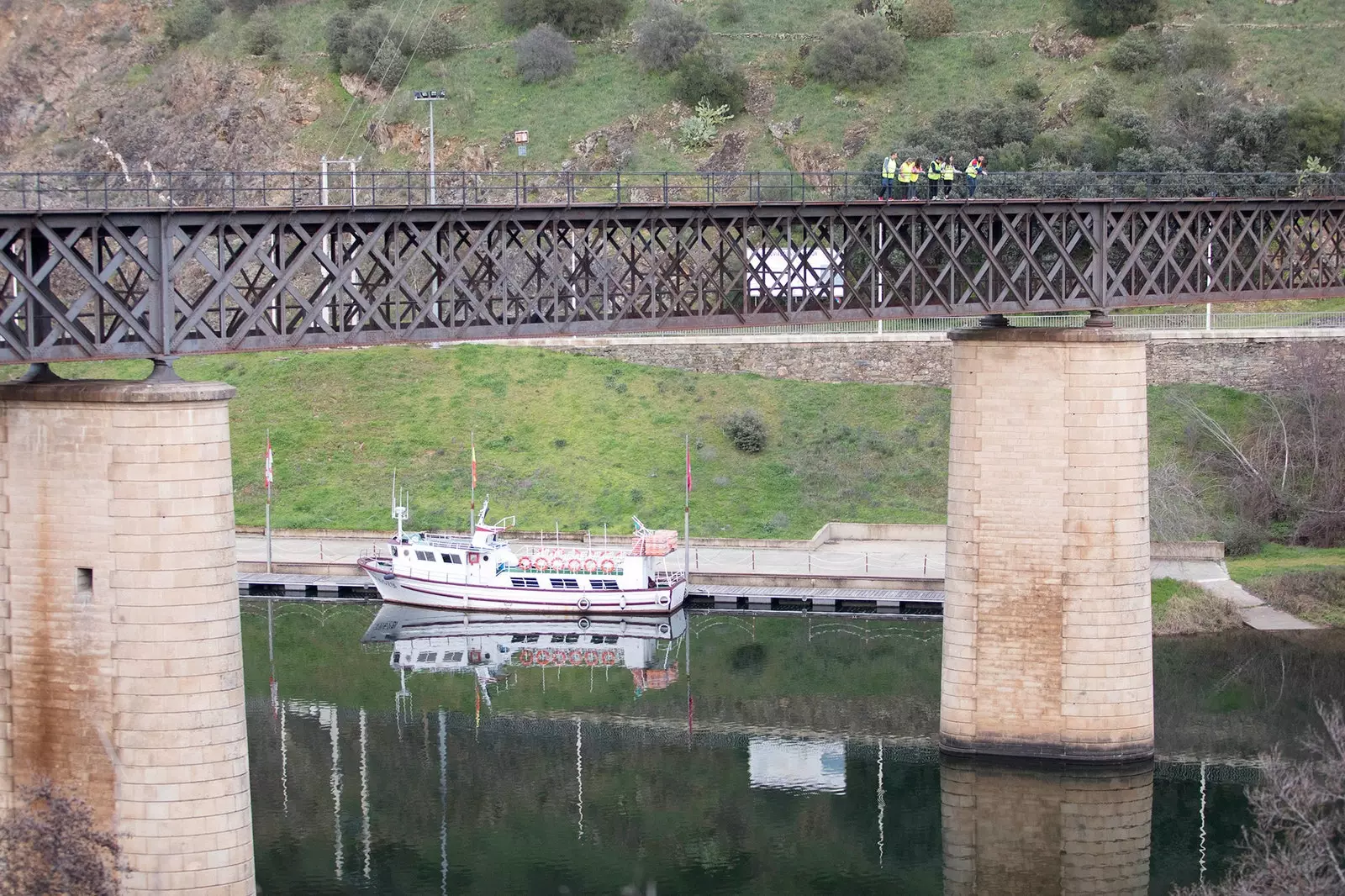
Between all the bridges they add a length of 1,040 meters
